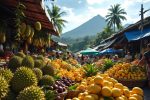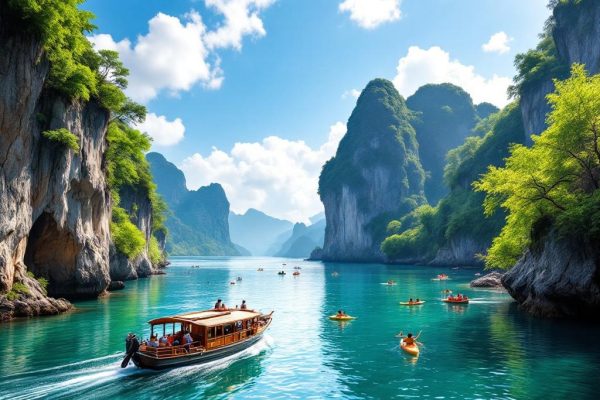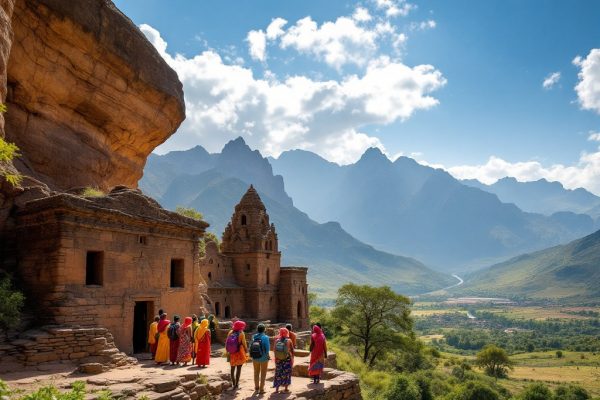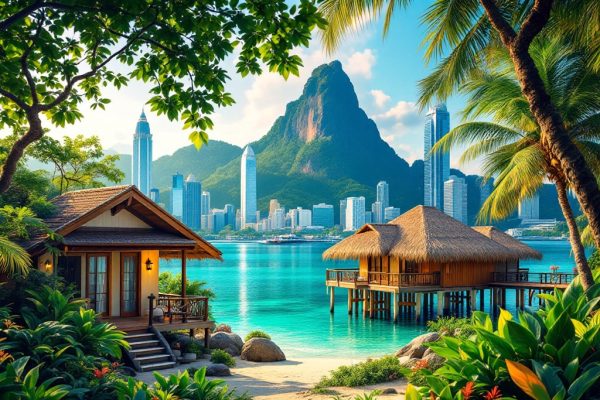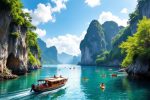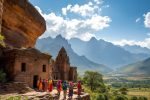Highest Mountains to Climb in the Philippines
Dreaming of conquering towering peaks? The Philippines, a land of majestic mountains, awaits! From the Philippines’ highest, Mount Apo at 2,954 meters, to the breathtaking Mount Pulag, known for its “sea of clouds,” these volcanic wonders offer diverse ecosystems and unique climbing challenges. Discover the rich biodiversity and cultural significance of mountains across Luzon, Visayas, and Mindanao. Learn essential hiking tips and explore popular trails like the Kidapawan-Magpet route on Mount Apo or the varied trails of Mount Pulag. Plan your unforgettable adventure and explore the stunning natural beauty of the Philippines’ highest peaks!
Important information
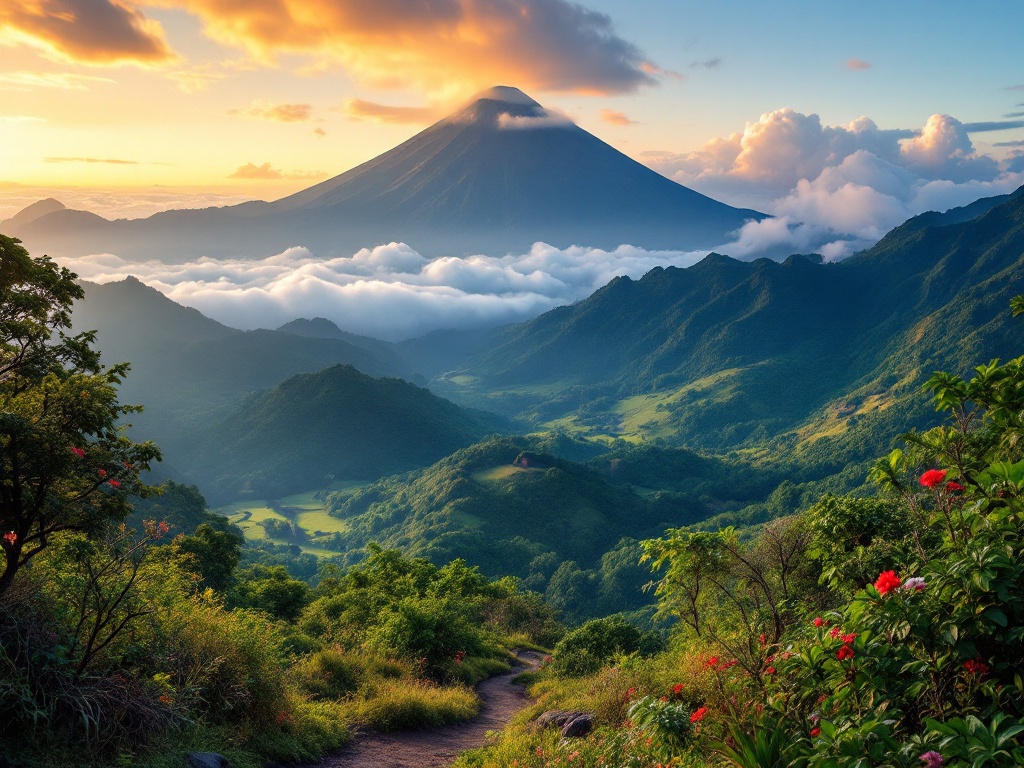
- Mount Apo is the highest peak in the Philippines, standing at 2,954 meters.
- The Philippines has three main island groups for climbing: Luzon, Visayas, and Mindanao.
- Mount Pulag is known for its “sea of clouds” and diverse plant and animal life.
- Climbers should be prepared for challenging terrain and consider hiring local guides.
- Mount Apo Natural Park protects the biodiversity of Mount Apo and promotes sustainable tourism.
Exploring the Highest Mountains to Climb in the Philippines
The Philippines boasts an array of majestic mountains. Towering above them all is Mount Apo at 2,954 meters. Mount Pulag follows closely behind at 2,922 meters, while Mount Dulang-Dulang reaches 2,938 meters. Mount Kitanglad stands tall at 2,899 meters, and Mount Kalatungan reaches 2,824 meters. Other notable peaks include Mount Tabayoc at 2,842 meters and Mount Ragang at 2,815 meters. These challenging climbs offer adventurers diverse ecosystems and a glimpse into the country’s stunning natural beauty.
What Makes the Mountains of the Philippines Unique?
The remarkable Philippine mountains, forged by volcanoes, boast a rugged and diverse terrain. This volcanic activity has sculpted unique, high-altitude ecosystems teeming with a variety of plants and animals. Beyond their ecological significance, these mountains hold cultural importance for indigenous communities who consider them sacred, integral to the Philippine landscape.
Geographical Distribution: Luzon, Visayas, and Mindanao
The Philippine archipelago is divided into three primary island groups: Luzon, Visayas, and Mindanao. Each group features unique mountain ranges. Luzon’s most prominent range is the Cordillera Central.
Mountains in Luzon: Cordillera Central and Beyond
The Cordillera Central dominates Luzon’s landscape, boasting Mount Pulag, a haven for climbers drawn to its biodiversity and cool air. Other mountain ranges stretch across Luzon, including peaks like Mount Banahaw.
Mountains in the Visayas: A Lesser-known Journey
Looking for a unique climbing adventure? Discover the Visayas region in the Philippines. These mountains, less traveled than those in Luzon or Mindanao, offer incredible biodiversity and breathtaking views. Experience the local Visayan culture for an unforgettable journey.
Mindanao’s Majestic Peaks
Mindanao’s landscape is dominated by majestic mountains. These include the Philippines’ highest peak, Mount Apo, soaring 2,954 meters. Other significant peaks, such as Mount Kalatungan and Mount Kitanglad, contribute to the island’s diverse ecosystems and rich biodiversity.
Top Ten Highest Peaks in the Philippines
Dominating the Mindanao landscape, Mount Apo stands as the Philippines’ highest peak at a towering 2,954 meters. Mount Dulang-dulang reaches 2,938 meters, while Mount Pulag rises to 2,922 meters. Mount Kitanglad ascends to 2,899 meters.
Mount Kalatungan stands tall at 2,824 meters and Mount Tabayoc at 2,818 meters. Close behind Tabayoc, Mount Ragang peaks at 2,815 meters. In contrast, Mount Busa and Mount Matutum, at 2,083 and 2,040 meters respectively, offer a different perspective on the diverse elevations found throughout the Philippine archipelago.
Mount Apo: The Highest Peak in the Philippines
Dominating the Davao region of the Philippines, Mount Apo stands as the nation’s highest peak at 2,954 meters, attracting climbers and nature lovers alike. Its biodiversity and scenic vistas draw visitors to experience the unique ecosystems thriving on its slopes, from tropical rainforests to misty, mossy forests.
Mount Dulang-Dulang: A Tall Giant in Bukidnon
At 2,938 meters, Mount Dulang-Dulang is the second-highest peak in the Philippines, a challenging but rewarding climb for adventurous hikers. Located within Bukidnon’s Kitanglad Mountain Range, the trails offer breathtaking scenic views.
Mount Pulag: Luzon’s Towering Beauty
Mount Pulag, standing at 2,922 meters in Benguet, is the third highest peak in the Philippines. It’s renowned for its stunning “sea of clouds” and diverse plant and animal life, drawing many climbers and tourists every year. The summit provides especially spectacular panoramic views at sunrise.
Mount Kitanglad: Bukidnon’s Majestic Summit
Mount Kitanglad, standing tall at 2,899 meters, offers breathtaking views of Bukidnon. As the Philippines’ fourth highest peak, this majestic mountain is nestled within the protected Kitanglad Mountain Range, renowned for its incredible biodiversity. Hikers can explore diverse trails through varied ecosystems, hoping to catch a glimpse of the magnificent Philippine Eagle. While the stunning panoramic views and rich wildlife are a major draw, beginners should be prepared for the challenging terrain and consider a guided tour for a safe and enriching experience.
Mount Kalatungan: A Prominent Peak in Mindanao
At 2,860 meters, Mount Kalatungan is the fifth highest peak in the Philippines, spanning the provinces of Bukidnon and Lanao del Sur. Its diverse ecosystems and stunning landscapes make it a remarkable natural wonder.
Mount Tabayoc: Benguet’s Prized Mountain
Mount Tabayoc in Benguet stands tall at 2,842 meters, marking it as the sixth highest peak in the Philippines. This mountain is a beloved destination for mountaineers, offering demanding trails coupled with breathtaking views. While the climb is challenging, the stunning scenery makes it a rewarding experience.
Mount Ragang: The Volcanic Giant
Mount Ragang, dominating the Mindanao skyline, reaches a height of 2,815 meters (9,236 feet). Located between the provinces of Lanao del Sur and Cotabato, this active volcano is one of Mindanao’s highest points. It is a prominent feature of the island’s volcanic Ragang Mountain Range.
Hiking the Tallest Mountains in the Philippines
Conquering the Philippines’ highest peaks demands meticulous planning and preparation. Before embarking on your climb, ensure you are in peak physical condition and fully understand the inherent risks. Pack meticulously, including sturdy boots, appropriate clothing, a first-aid kit, and navigation tools. Thoroughly research trail conditions and weather forecasts. Adequate food and water are crucial for maintaining energy levels. Consider hiring a local guide for their expertise in safety and invaluable local insights. Be mindful of altitude sickness and take necessary precautions. Respect local customs and traditions. Finally, inform someone of your itinerary and expected return date for safety.
Achieve peak physical fitness. Understand the risks associated with high-altitude climbing.
Pack meticulously. Include sturdy boots, appropriate clothing, a first-aid kit, and navigation tools.
Research thoroughly. Check trail conditions and weather forecasts before your climb.
Pack essentials. Ensure you have adequate food and water for your journey.
Consider a local guide. They can enhance your safety and provide valuable local insights.
Be aware of altitude sickness. Take necessary precautions to mitigate its effects.
Respect local customs and traditions. This shows respect for the local culture.
Inform someone of your plans. Share your itinerary and expected return date with a trusted contact.
Essential Hiking Tips for Mountain Climbers
Exploring the Kidapawan-Magpet Trail in Mount Apo Natural Park
The Kidapawan-Magpet route.
Preparing for the Challenges of Mount Pulag’s Trails
Climbing Mount Pulag offers various trails, each with its own unique features. The Ambangeg trail, popular for its accessibility, caters to hikers of all levels. Experienced hikers often choose the Akiki trail, known for its challenging terrain and scenic views. The Tawangan trail presents a moderate challenge, offering a balance between accessibility and scenic beauty.
Ambangeg Trail
Easiest and most popular trail, ideal for beginners and families. Offers stunning sunrise views from the summit.
Akiki Trail
Known as the “killer trail,” this challenging route is best suited for experienced hikers. Provides a more immersive wilderness experience.
Tawangan Trail
A moderately challenging trail offering a balance between accessibility and scenic beauty. A good option for those seeking a bit more adventure.
Step 1: Secure a permit
Obtain necessary permits from the DENR office in Ambangeg. This is a crucial step to ensure a smooth climb.
Step 2: Hire a local guide
Engage a local guide for a safer and more informative experience. They can provide valuable insights into the mountain’s ecology and culture.
Step 3: Pack accordingly
Bring warm clothing, as temperatures can drop significantly at higher altitudes. Don’t forget essentials like water, food, and a first-aid kit.
Step 4: Respect the environment
Practice Leave No Trace principles. Pack out all trash and avoid disturbing the natural surroundings.
Step 5: Enjoy the breathtaking views
Take in the panoramic views from the summit. Remember to capture the moment but also savor the experience.
Conservation and Recognition
Mount Apo Natural Park plays a crucial role in safeguarding the rich biodiversity of Mount Apo, protecting its unique flora and fauna. The park’s regulations on activities like hiking and climbing minimize human impact, preserving the delicate ecosystem. Furthermore, the park’s research and educational initiatives promote conservation awareness, emphasizing its significance for the mountain’s future.
The Role of Mount Apo Natural Park
Mount Apo Natural Park safeguards a diverse range of unique plant and animal species, some exclusive to this area. The park champions sustainable tourism while prioritizing environmental protection. It serves as a vital resource for the region.


